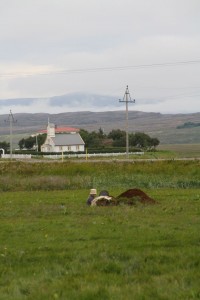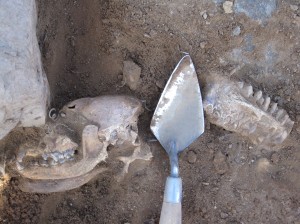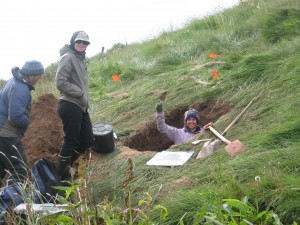August 6, 2009
by Laura Ng
0 comments
There are only 4 digging days left and the Seyla crew has been very busy removing more modern buildings in order to reach the Viking Age archaeology underneath. The midieval cow barn has been fully documented and removed and we have begun exploring the area around the cow barn. The final aerial photograph from the cow barn can be accessed here:
http://photosynth.net/view.aspx?cid=93002bcc-4808-4d84-8379-41722086ddb3
All of the rocks were removed and some even took up to 6 people to move. Here is an example of the rocks we had, (a rock ledge which was used as the feeding trough for the cows) to move and a picture of us excavating the lower levels of the structure.


The building appeared to have been cut into much of the Viking age building that is apparently located beneath and around this one. While we excavated the cuts and removed the rocks we discovered evidence of possible floor layers or deposits from the Viking age building. We removed another wall north of the Midieval cow barn which we believe is contemporaneous or predating the cow barn. This wall is shown here:

While this wall was poorly preserved – it was to our advantage. Directly beneath it appears to be remnants of the Viking age building which runs north to south and and has a possible east to west running wall in this location. It still may be a day or two before the edges of the Viking age building are defined, but it is now clear that we are through most of the midieval archaeology in the area.
All in all, our goals over the next few days will be to resolve much of the archaeology that remains on the site. We hope to delineate the boundaries of some of the unfinished buildings on the site, examine the relationships between the multiple large buildings and document everything the best we can.
-Pete











